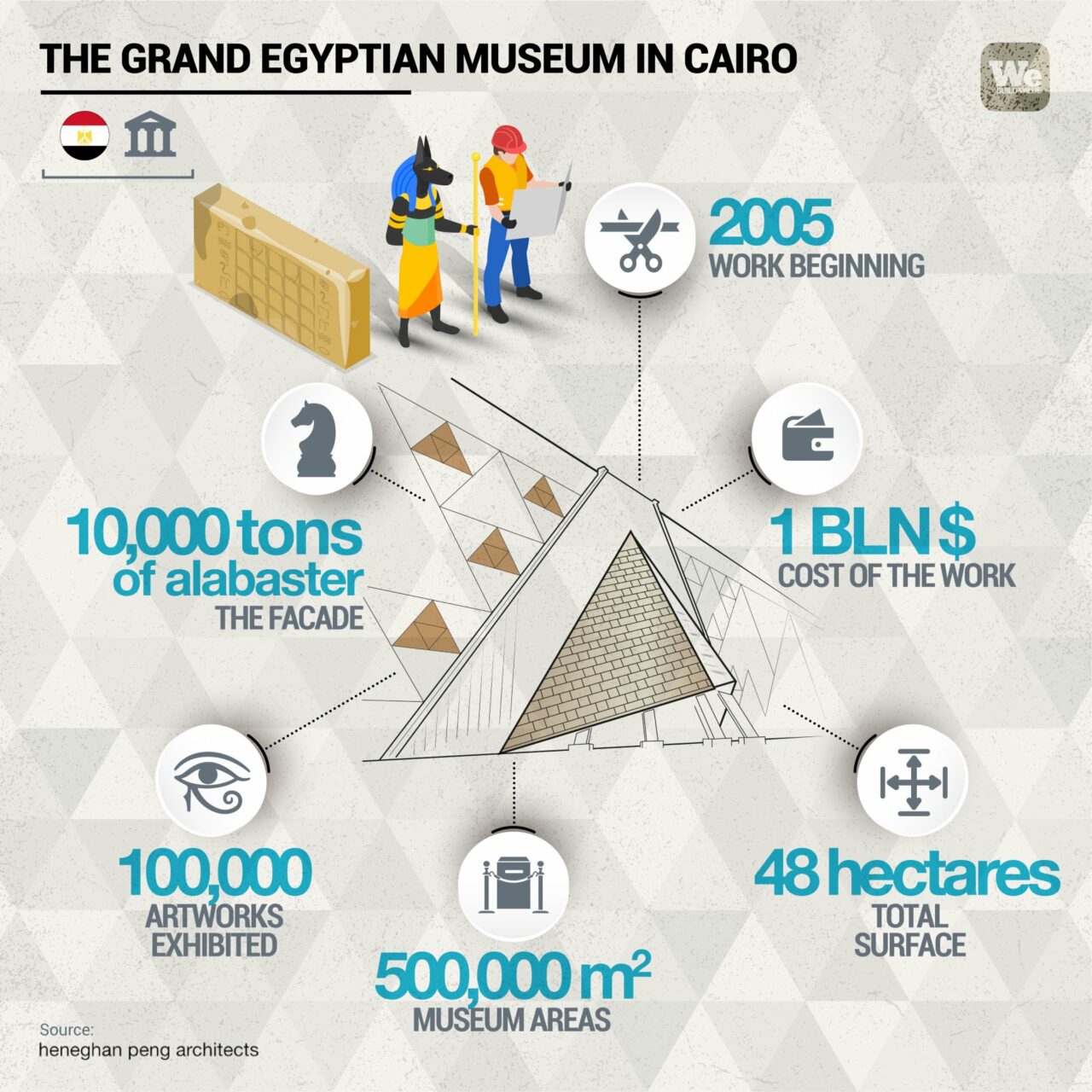An international competition to choose the best architectural design; twenty years to build it; one billion dollars to cover the construction costs. The Grand Egyptian Museum in Cairo is no longer a dream. As of now, the expected month for its inauguration is February, a mirage for many considering that its history began in 2003 when the first competition was announced, pitting the world’s largest design studios against each other. In the end, the responsibility and honor of designing the new home for the pharaohs fell to the Irish studio Heneghan Peng Architects, with construction starting in 2005. The Egyptian government has not officially announced the date, but those involved in the project are convinced that it is now a matter of weeks before a grand work dedicated to culture and art becomes a heritage for all.
The Grand Egyptian Museum in Cairo: a world record for art and archaeology
Global interest in the Grand Egyptian Museum was reignited in April 2021 when the government organized the Pharaohs’ Golden Parade, where 22 royal mummies were moved from the old museum to the new one. A unique event, broadcast worldwide, confirming the value of this extraordinary work, remarkable not only for its content but also for its location. The Grand Museum is located on the edge of a desert plateau between the Great Pyramid of Giza and Cairo. The site, 20 kilometers from the city, covers 48 hectares and spans a height difference of 50 meters because one of the stone facades overlooks the Nile.
To enter the museum, you pass through a monumental square leading to an atrium occupied by a statue of Pharaoh Ramses II, almost 11 meters tall and dating back to 3,200 years ago. Beyond Ramses II, you come into contact with the world’s largest exhibition space dedicated to a single civilization: 500,000 square meters of museum areas with 100,000 exhibited artifacts, 20,000 of which have never been shown to the public. Surrounding the history, innovation, and technology of a unique structure, such as the facade built with glass, marble, and 10,000 tons of alabaster, or the triangular solar panels reminiscent of the shape of the pyramids. All this to protect an immense heritage that Egypt shares with the world.
Abu Simbel, protecting and safeguarding art
The construction of the Grand Egyptian Museum recalls another feat accomplished in Egypt over 60 years ago, namely the rescue of the temples of Ramses II at Abu Simbel. On January 9, 1960, just three months after the start of work on the construction of the Aswan High Dam, UNESCO launched a worldwide appeal regarding the risk that the new dam could cause the flooding of the temples. This appeal was answered by large companies around the world, starting with Webuild, which brought together some of its best men and equipment to participate in the temple rescue mission. The two temples, weighing 265,000 and 55,000 tons respectively, were first segmented, then the sculptures were separated into blocks, dismantled, and reassembled in a safe location, an artificial hill lined with the original stone. On May 21, 1965, after about two years of work, the first block was moved, while in September 1968, after 40 million hours of work, the two temples were perfectly reconstructed and returned to the community.
Museums as works of art
Even beyond the collection it houses, the Grand Egyptian Museum is itself a work of art. Its lines, structure, technologies, and perfect integration with the environment transform it into an artistic artifact. This is the case for many great museums, from the Guggenheim Museum in Bilbao designed by Frank Gehry to the Stavros Niarchos Foundation Cultural Center, the incredible cultural center built by the Webuild Group in Athens and designed by Italian architect Renzo Piano. Art and archaeology intertwine with engineering science, as is also the case in the ambitious project to build the new Metro C station in Rome at Piazza Venezia. The work, carried out by the Metro C Consortium led by Webuild, includes the construction of a museum station, the most incredible in the world, which will become an underground showcase of Ancient Roman civilization.


